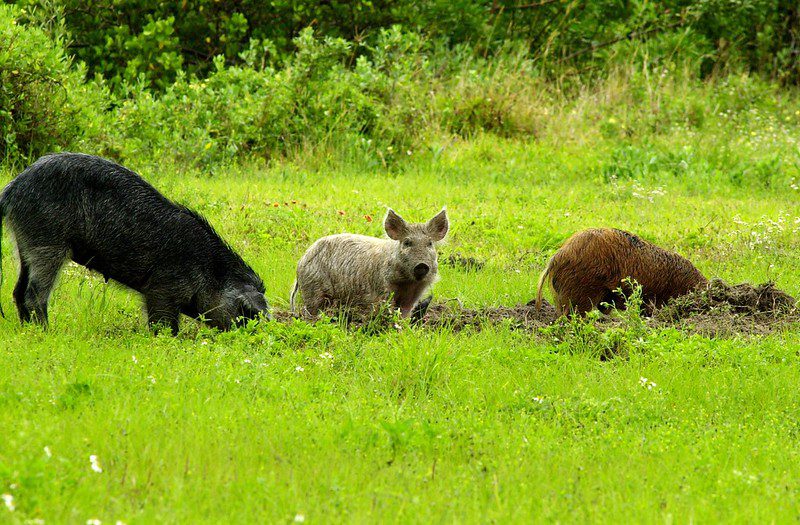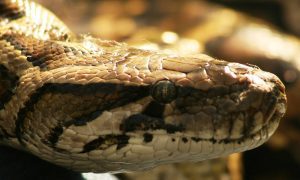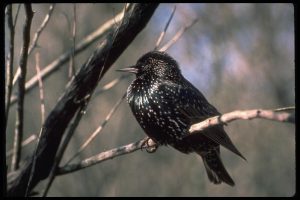Interested in teaching about invasive species? Check out the World of 8 Billion student video contest for an exciting small group project for grades 6-12!
What is an Invasive Species?
An invasive species is a non-native species that causes harm to an ecosystem. Any living organism can be an invasive species if it is found outside of its natural habitat.

Characteristics of Invasive Species
Here are four key traits of an invasive species:
- Invasive species are most commonly generalists, meaning they “can live in many different types of environments, and have a varied diet.”
- Invasive species typically have the ability to grow and reproduce quickly.
- Invasive species rarely have natural predators in their new ecosystems.
- Invasive species must cause harm, whether to property, native species, or the economy
All of these characteristics together make it easy for invasive species to outcompete native species.
Why Are Invasive Species Dangerous to the Environment?
When introduced to a new environment, invasives eat the food of native species, utilize the native species’ habitats, and overall, use up resources the native species depend on, leaving the native species unable to compete.
Invasive species are one of the biggest causes of biodiversity loss and pose a major threat to native species worldwide. Whether they’re brought in from a foreign country or from another region of their own country, the impact is the same- devastating loss. And once they’re in the new location, invasives can be quite challenging to remove. The global economic cost of removing invasive species is quite large and that total doesn’t even include the cost of fixing the damage they cause. As they invade new ecosystems, invasives can damage infrastructure, properties, and agricultural lands.
There are over thirty thousand invasive species around the globe and more than 6,500 established here in the U.S. Some of the major invasives in the U.S. are feral swines, burmese pythons, domestic cats, and European starlings. Read on for how these four species came to be invasive and the damage they’ve caused.
Invasive Species Examples
Feral Swine
First introduced in the U.S. in the 1900s for sport hunting, feral swine have caused major destruction and property damage in the years since. In terms of costs, research estimates that they cause at least $1.5 billion in damages to agriculture, property, native species, ecosystems and cultural resources each year. Damage includes uprooting land, eating crops, and trampling sensitive species etc. Due to their size, the number of them, and their reproductive habits, feral swine have proven to be very tough to control and remove.
Burmese Pythons
 Brought to the U.S. for the pet trade, Burmese Pythons have wreaked havoc on the native ecosystems in Southern Florida after escaping and/or being intentionally released. They are aggressive predators and are decimating already endangered native species populations, as well as outcompeting native snake species such as the indigo snake.
Brought to the U.S. for the pet trade, Burmese Pythons have wreaked havoc on the native ecosystems in Southern Florida after escaping and/or being intentionally released. They are aggressive predators and are decimating already endangered native species populations, as well as outcompeting native snake species such as the indigo snake.
Domestic Cats
Having arrived with the first European colonists, domestic cats have long posed a threat to native birds, but in recent years their numbers have skyrocketed. More than 100 million feral/outdoor cats now roam the streets of the U.S., killing over a billion birds each year. This degree of predation has the very real potential to completely wipe out already threatened bird species such as the piping plover.
European Starlings
 Intentionally introduced in Central Park in the late 1800s by fans of Shakespeare, European Starlings have since adapted to living around the country. They are flexible in where they live and breed frequently, which has allowed them to become one of the most common birds in all of the United States. They cause upwards of $800 million in agricultural damages each year and have the potential to outcompete native cavity-nesting birds.
Intentionally introduced in Central Park in the late 1800s by fans of Shakespeare, European Starlings have since adapted to living around the country. They are flexible in where they live and breed frequently, which has allowed them to become one of the most common birds in all of the United States. They cause upwards of $800 million in agricultural damages each year and have the potential to outcompete native cavity-nesting birds.
These four species are just a snapshot of the thousands of invasive species that now call the United States home. Annual costs of invasive species in the U.S. are estimated to be around $137 billion. They pose a very real threat, not only to our infrastructure and agricultural industries, but also to our diverse ecosystems and native species.
How to Stop Invasive Species
Luckily, there are ways to stop the spread of invasive species, as well as remove them from their new homes. When it comes to aquatic species, boat inspections and ballast water treatments are key to making sure invasive species aren’t accidentally hitching rides and being moved around. Monitoring habitats for early detection is also key. If a potential threat is caught early-on, it is a lot easier to remove than if it is already well-established. Education is a powerful tool as well. Educating people to plant native species, rather than exotics ones, and to not release their unwanted pets into the wild can go a long way in stopping the spread of invasives.
As for full removal, most invasive species require their own unique removal/control procedure, making it difficult and expensive to remove them. However, it is critical that we put in the effort to do so, as the costs of ignoring them climb ever higher.
Image credits: Invasive feral swine (20140402-APHIS-UNK-0012 by US Department of Agriculture is licensed under CC BY 2.0); Invasive Burmese pythons (20140402-APHIS-UNK-0007 by US Department of Agriculture is licensed under CC BY 2.0); Invasive European starlings (20140402-APHIS-UNK-0009 by US Department of Agriculture is licensed under CC BY 2.0)


